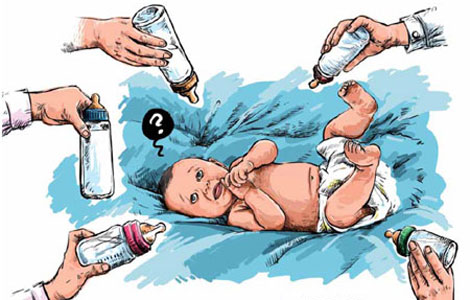'383 plan' calls for reform across the board
Updated: 2013-10-31 07:14
By Li Yang (China Daily)
|
|||||||||||
Chinese leaders will hold a high-level meeting from Nov 9 to 12 in Beijing to map out the next round of reform. It will cover many important parts of the economy. The following is an introduction, written by China Daily business reporter Li Yang, of a plan that is used as a blueprint for the meeting's final document
The meeting is the Third Plenary Session of the Communist Party of China's 18th Central Committee, also known as the 2013 Third Plenum.
Ahead of the Third Plenum's communique's adoption and release, a reform plan from a major government think tank was released to the public.
Writing the plan was a group of experts led by Li Wei, director of the Development Research Center of the State Council, and Liu He, vice-minister of the National Development and Reform Commission, according to the China Securities Journal. The document is known as the "383 plan" in the Chinese press.
One outstanding feature is the plan's proposal for urgent, broad-based reform of the economic system.
"To accomplish the task of building a comparatively well-off society in 2020, as it was set by the Communist Party of China 18th National Congress (in 2012), China is to take a number of major efforts in transforming its growth model and mending its systematic drawbacks in a limited period of time."
This is the opening statement of the "383 plan", a reform proposal that is rare in its breadth and scope.
The "383 plan" is named for its content: a "trinity reform" of market, government and enterprise, which will be spread across eight key areas, with three major breakthroughs to be made.
That the plan focuses not only on reform targets but also on how to attain them, despite the difficulty in doing so, has been a major talking point following its release.
The new reform's goal, according to the plan, is to establish an energetic, innovative, inclusive, orderly and rule-by-law socialist market economy in three steps - from 2013 to 2014, 2015 to 2017 and 2018 to 2020.
The three main reforms of the "trinity" are: improving the market system, transforming government functions and creating new business structures.
First, the government should adjust its production factors - land, labor and capital - and allow the market to allocate resources with more autonomy on a wider scope.
Second, the government should streamline its administrative approvals, clarify its duties, increase transparency, and deepen fiscal and tax reform to serve the people and protect social justice.
Third, the government should open up the marketplace to different players and ensure that competition among enterprises for production factors and innovation incentives is fair, in order to boost innovation and advanced management.
The eight key areas for reform are as follows.
First, trim the number of required administrative approvals.
Second, reform basic industries, such as railway, oil/gas and power, by lowering entry barriers, promoting market competition and achieving more effective supervision.
Third, launch land reform to give both rural and urban landowners equal rights, establish a unified land market and let landowners share equitably in the rise of land values.
Fourth, reform the financial sector by lowering entry barriers and liberalizing deposit interest rates and exchange rates.
Related Stories
Think tank report focuses on new reforms 2013-10-30 08:39
Reforms lift PetroChina Q3 profit 2013-10-30 07:33
Think tank drafts financial reform plan 2013-10-28 00:36
Reforms will be comprehensive, president says 2013-10-24 00:40
Carry on in-depth reforms 2013-10-22 08:11
Today's Top News
Firms heading home as benefits wane in China
US urged to explain phone taps
Disclosure of WTO report rebuked
Vaccine gets nod for global use
Freer RMB 'can answer US claims'
'Dangerous provocation' condemned
Promoting baby formula prohibited in hospitals
Police told to protect medical workers
Hot Topics
Lunar probe , China growth forecasts, Emission rules get tougher, China seen through 'colored lens', International board,
Editor's Picks

|

|

|

|

|

|





